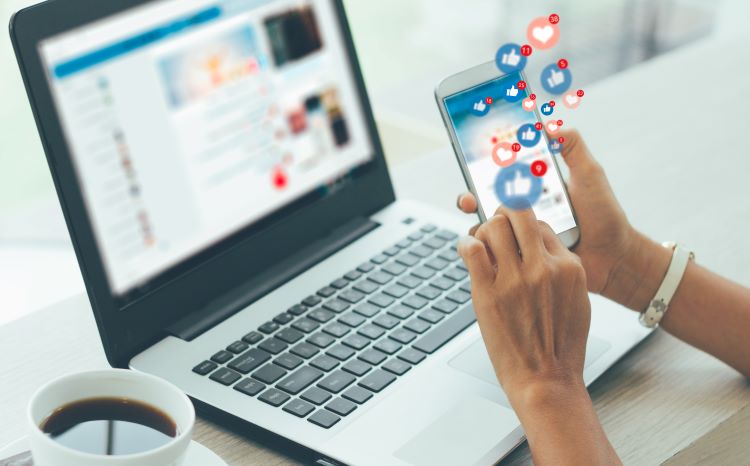Anxiety in the Digital Age: Navigating Modern Stressors
Anxiety disorders have become increasingly prevalent in recent years, with the digital age introducing new stressors and exacerbating existing ones. The constant connectivity, information overload, and social media pressures of modern life have created a perfect storm for anxiety to flourish. While technology has undoubtedly brought numerous benefits, it has also reshaped our social interactions, work environments, and daily routines in ways that can significantly impact mental health. Understanding the relationship between our digital world and anxiety is crucial for developing effective coping strategies and maintaining overall wellbeing in the 21st century.

Social media platforms, while designed to connect people, have paradoxically led to increased feelings of isolation and inadequacy for many users. The curated nature of online profiles can create unrealistic standards and foster unhealthy comparisons, leading to heightened anxiety about one’s own life and accomplishments.
The Impact of Information Overload
One of the most significant contributors to anxiety in the digital age is information overload. With news and data constantly at our fingertips, it’s easy to become overwhelmed by the sheer volume of information we encounter daily. This constant influx can lead to decision fatigue, as we struggle to process and prioritize the vast amount of data available to us.
Moreover, the 24/7 news cycle and instant access to global events can create a sense of perpetual crisis, even when our immediate surroundings are relatively stable. This heightened awareness of potential threats and disasters can trigger anxiety responses and contribute to a general sense of unease.
Digital Detox and Mindful Technology Use
As awareness of digital-induced anxiety grows, so does the popularity of digital detox practices. These intentional periods of disconnection from technology aim to reduce stress and improve overall wellbeing. Digital detoxes can range from brief daily breaks to extended technology-free retreats.
Mindful technology use is another approach gaining traction. This involves being more intentional and aware of how and when we engage with digital devices. Techniques such as setting specific times for checking emails or social media, turning off non-essential notifications, and creating tech-free zones in the home can help reduce anxiety and improve focus.
The Role of Social Media in Anxiety
While social media platforms offer unprecedented connectivity, they also present unique challenges to mental health. The constant comparison to others’ highlight reels can lead to feelings of inadequacy and low self-esteem. Additionally, the fear of missing out (FOMO) driven by social media can create a cycle of anxiety and compulsive checking behavior.
Research has shown a correlation between heavy social media use and increased anxiety and depression, particularly among younger users. The pressure to maintain a perfect online image, coupled with the potential for cyberbullying and online harassment, can significantly impact mental wellbeing.
Workplace Anxiety in the Digital Age
The digital revolution has transformed the workplace, introducing new sources of anxiety for many employees. The expectation of constant availability, facilitated by smartphones and remote work technologies, can blur the lines between work and personal life, leading to burnout and increased stress levels.
Moreover, the rapid pace of technological change can create anxiety around job security and the need for continual upskilling. The fear of being replaced by automation or falling behind in digital literacy skills is a growing concern for many workers across various industries.
Coping Strategies for Digital-Age Anxiety
Developing effective coping strategies is essential for managing anxiety in the digital age. Mindfulness practices, such as meditation and deep breathing exercises, can help individuals stay grounded in the present moment and reduce the overwhelm caused by digital stimuli.
Establishing clear boundaries around technology use is another crucial step. This might involve setting designated “offline” hours, creating tech-free spaces in the home, or implementing a “no phones at the dinner table” rule to foster real-world connections.
Cognitive-behavioral therapy (CBT) techniques can also be particularly effective in addressing digital-age anxiety. These methods help individuals identify and challenge negative thought patterns related to technology use and social media comparisons.
The Future of Mental Health in a Digital World
As our reliance on technology continues to grow, so does the need for innovative approaches to mental health care. Digital therapeutics, teletherapy, and mental health apps are emerging as promising tools for managing anxiety and other mental health concerns. These technologies offer increased accessibility to mental health resources and the potential for personalized, data-driven interventions.
However, it’s crucial to approach these digital solutions with caution and ensure they complement rather than replace traditional mental health care. Striking a balance between leveraging technology’s benefits and mitigating its potential negative impacts on mental health will be a key challenge moving forward.
Cultivating Digital Resilience
Building digital resilience is becoming increasingly important in navigating the challenges of the modern world. This involves developing the skills and mindset to use technology in a way that enhances rather than detracts from our wellbeing. Education plays a crucial role in this process, with schools and workplaces beginning to incorporate digital wellness into their curricula and training programs.
Teaching critical thinking skills to evaluate online information, promoting healthy digital habits, and fostering real-world connections are all essential components of building digital resilience. By equipping individuals with these tools, we can help create a more balanced and mentally healthy relationship with technology.
In conclusion, while the digital age has introduced new challenges for mental health, it also offers unprecedented opportunities for connection, learning, and personal growth. By understanding the unique stressors of our digital world and developing strategies to manage them, we can harness the benefits of technology while safeguarding our mental wellbeing. As we continue to navigate this ever-evolving landscape, maintaining a mindful and balanced approach to our digital lives will be key to thriving in the modern world.




